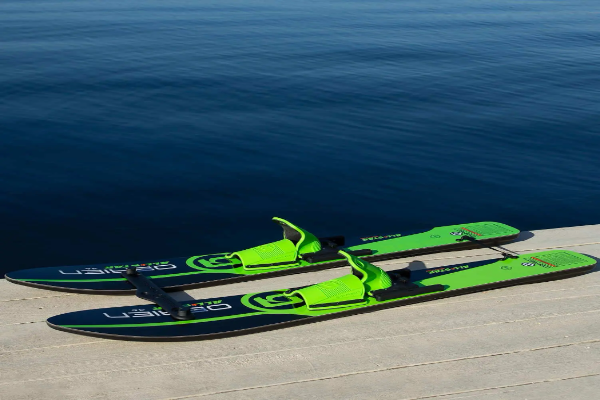Paddleboarding, or stand-up paddleboarding (SUP), has rapidly become one of the most popular water sports in recent years. Offering a unique combination of relaxation and full-body workout, paddleboarding allows you to glide across calm waters while enjoying the beauty of nature. Whether you’re paddling on a serene lake, navigating a gentle river, or even tackling small ocean waves, paddleboarding is accessible to people of all ages and fitness levels. However, mastering the art of paddling a paddleboard requires more than just standing on a board and moving a paddle through the water. It involves understanding the proper techniques, equipment, and safety measures to ensure a smooth and enjoyable experience.
For beginners, the first step to successful paddleboarding is choosing the right board and paddle. With a variety of board types available—ranging from all-around boards for general use to specialized touring or racing boards—it’s important to select one that matches your skill level and intended use. The paddle, too, plays a crucial role in your performance, with factors like length, blade shape, and material impacting your efficiency on the water. Once you have the right equipment, learning the correct paddling techniques is essential. This includes understanding how to properly grip the paddle, finding the right stance on the board, and executing different strokes to maneuver effectively.
SEE ALSO: How to Ride a Bodyboard
Getting Started
Choosing the Right Paddleboard
Selecting the appropriate paddleboard is crucial for your success and enjoyment on the water. There are various types of paddleboards, including all-around boards, touring boards, and inflatable boards, each designed for different activities and skill levels.
All-Around Boards: Ideal for beginners, these versatile boards are designed for a variety of conditions and activities. They typically range from 10 to 12 feet in length and offer good stability.
Touring Boards: These boards are longer and narrower, designed for long-distance paddling and speed. They are suitable for paddlers with some experience.
Inflatable Boards: Portable and durable, inflatable paddleboards are great for those with limited storage space or who travel frequently. They perform well in various conditions but may not offer the same rigidity as hard boards.
When choosing a board, consider your weight, height, and the type of water you’ll be paddling on. For beginners, a wider and longer board will provide better stability.
Essential Gear
Apart from the paddleboard, you’ll need several key pieces of equipment:
Paddle: The paddle should be approximately 8-12 inches taller than your height. Adjustable paddles are great for beginners, allowing you to find the right length as you get more comfortable on the water.
Leash: A leash is a safety device that keeps you connected to your board if you fall off. It’s especially important in open water or windy conditions.
Personal Flotation Device (PFD): Depending on local regulations, wearing a PFD might be mandatory. Even if it’s not, a PFD is a crucial safety measure, especially in deeper or rough waters.
Wetsuit or Rash Guard: Depending on the water temperature, a wetsuit or rash guard will keep you comfortable and protected from the sun.
Safety Precautions
Safety is paramount when paddleboarding. Before you hit the water, follow these precautions:
Check Weather Conditions: Always check the weather forecast and water conditions before heading out. Avoid paddling in strong winds, storms, or high waves if you’re a beginner.
Wear a PFD: As mentioned, a PFD is essential for safety, ensuring you stay afloat if you fall into the water.
Be Aware of Your Surroundings: Stay vigilant about other watercraft, swimmers, and obstacles. Keep a safe distance from boats and avoid areas with strong currents.
Basic Techniques
Getting on the Board
Start in shallow water, where you can easily stand beside your board. Place the paddle across the board’s deck to stabilize it. Hold the edges of the board with both hands and climb on, kneeling first to find your balance. Once stable, stand up one foot at a time, keeping your knees slightly bent and your feet shoulder-width apart.
Paddling Technique
The correct paddling technique is key to efficient movement on the water. Hold the paddle with one hand on the top (the grip) and the other about halfway down the shaft. The blade should angle forward. To paddle, dip the blade into the water near the front of the board and pull it back toward your feet. Alternate sides to maintain a straight course. Keep your core engaged, using your whole body rather than just your arms.
Turning
To turn your paddleboard, use a sweeping stroke. Extend the paddle away from the board and sweep it in a wide arc from the nose to the tail. Turning can also be achieved by shifting your weight; for sharper turns, step back toward the tail of the board to lift the nose slightly out of the water.
Conclusion
Paddleboarding is much more than a leisurely activity; it’s an immersive experience that offers both physical and mental benefits. As you’ve learned throughout this guide, mastering the basics of how to paddle a paddleboard involves a combination of the right equipment, proper technique, and an understanding of safety measures. With patience and practice, even a beginner can quickly gain the confidence needed to navigate different water conditions and enjoy the freedom that paddleboarding provides.

